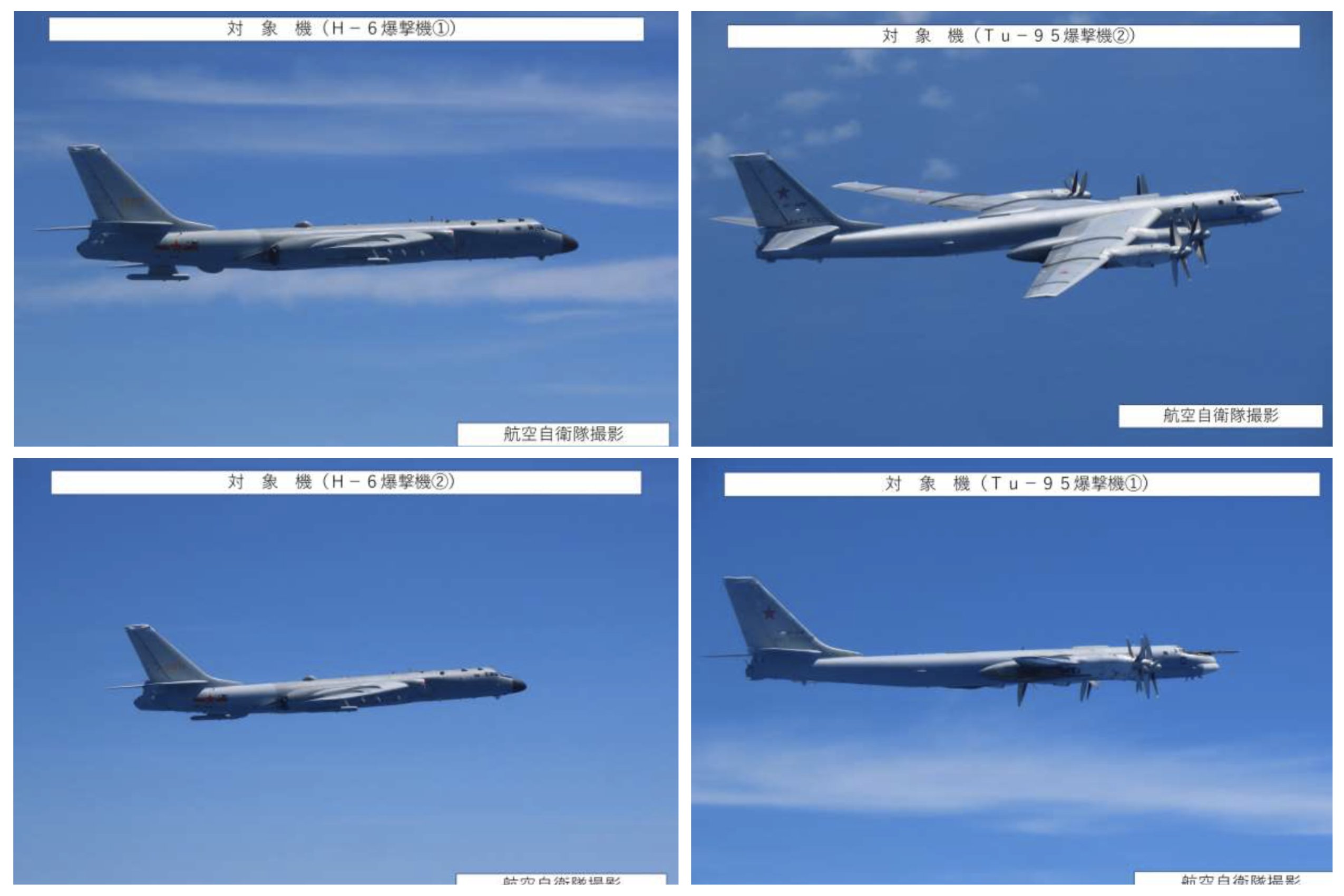
Japan Air Self-Defense Force fighter aircraft conducted a total of 424 scrambles during the first half of Fiscal Year 2023 (Apr. 1 – Sept. 30), according to data released by the Joint Staff Office (JSO) on Friday. While a slight decrease from FY2022’s total of 446, the JSO still considers the current total to be high. Meanwhile, a Philippine Navy landing ship tank on Friday warned off a People’s Liberation Army Navy (PLAN) corvette during a resupply mission.
The JSO noted in its report that since FY2013, the number of scrambles in the first half of each fiscal year has been at a high level with around 300–600 during that period. Scrambles against Chinese aircraft totaled 304 (72 percent), compared to 340 for FY2022 during the same time frame. Though this is a slight decrease, the JSO stated that scrambles against Chinese aircraft have been at a high level since FY2013.
Russian aircraft accounted for 110 scrambles (26%), an increase from 95 scrambles in FY2022, though the JSO claims scrambles against Russian aircraft have been considered at a low level since FY2013. The remaining 10 scrambles in the first half of FY2023 consisted of one against Taiwan, two against North Korea and seven against others, though the report did not provide further details.
The JASDF Southwest Air District conducted the most scrambles during the first half of FY2023, with a total of 257 scrambles, compared to 309 during the same period of FY2022. This district generally sees the highest number of scrambles, with both Chinese and Russian aircraft conducting operational training flights in the international airspace of the area, and PLAN carriers conducting deployments and exercises nearby in the Philippine Sea. The rest of the JASDF districts saw more scrambles in the first half of FY2023. There was a slight increase of 72 scrambles, up from 70, in the Northern Air District; the Central Air District also saw an increase with 26 scrambles, up from nine and the Western Air District completed 69 scrambles, as opposed to 58 the prior year.
Japan’s Ministry of Defense routinely reports the number of scrambles both monthly and quarterly. Though monthly reports include only data, with no statements or comments, the quarterly reports include both the data and a brief summary foreign air activity conducted around Japan that resulted in a scramble. The report on the first half of FY2023 added five instances to the 17 reported in the first quarter, with two instances involving Russian aircraft and three involving Chinese bombers and unmanned air systems (UASs).
On Aug. 18, two Russian IL-38 maritime patrol aircraft made a round trip from the Sea of Japan through the Tsushima Strait to the East China Sea before returning the same way. On Sept. 15, a Russian IL-20 electronic intelligence (ELINT) aircraft flew from the Sea of Japan to the Sea of Okhotsk before returning the same way, while second IL-20 flew over the Sea of Japan.
According to the report, on Aug. 25, two Chinese H-6 bombers flew in from the East China Sea, transited over the Miyako Strait and then flew back and forth across the Philippine Sea before returning. The other two instances involved Chinese UASs flying in from the East China Sea, passing through the airspace between Yonaguni Island and Taiwan and circuiting over the Philippine Sea. On Aug. 25, scrambles were conducted on a BZK-005 UAS and an unidentified Chinese UAS, while the other instance on Aug.28 involved a single BZK-005 UAS.

Meanwhile, in a Sunday release, the Armed Forces of the Philippines stated that on Friday landing ship tank BRP Benguet (LS507) warned off and issued consecutive radio challenges to China’s PLAN ship 621 after it shadowed the LST at an 240-foot distance and attempted to cross Benguet’s bow with a closest point of approach of 1,050 feet. The Chinese hull number corresponds to corvette CNS Panzhihua (621) and the incident took place at 6.7 miles southwest of Pag-asa Island.
Pag-Asa Island, known internationally as Thitu Island, is part of the disputed Spratly Islands archipelago, and are claimed by Brunei, China, Malaysia, the Philippines, Taiwan and Vietnam claiming portions and China and Taiwan claiming the whole archipelago.
“The Philippine Navy crew cited the violation of the Collision Regulations (COLREG) in its radio challenges, and demanded that the Chinese vessel steer clear of the BRP Benguet.
The Philippine Naval ship received a counter-response from PLAN 621 using their so-called and patently baseless ‘ten-dash line’ narrative,” read the statement.
The AFP also released a video of the incident.
General Romeo Brawner Jr., Chief of Staff of the AFP, strongly urged China to cease these dangerous maneuvers and aggressive actions towards Philippine vessels.
“China’s illegal presence and activities interfere with a legitimate Philippine rotation and resupply mission. Its conduct of aggressive maneuvers; and any other similar activities that infringes upon the country’s sovereignty, sovereign rights, and jurisdiction are violations of international law. The Philippines has continued to call on China to immediately stop its illegal activities in the country’s maritime zones,” Brawner stated in the release.”
When asked about the incident during a press conference on Monday, China Ministry of Foreign affairs spokesperson Mao Ning replied, “Zhongye Dao [China’s name for Pag-asa] is China’s territory. The Philippines has illegally occupied Zhongye Dao, which seriously violates China’s sovereignty. The Chinese warship’s navigation and patrol in waters of Zhongye Dao is lawful and legitimate.”
The China Coast Guard and China Maritime Militia have harassed and attempted to block a number of Philippines resupply missions in the disputed area. The Philippines now have a policy of releasing information, photographs and videos of each instance, along with embarkation of Philippine and international media to observe the resupply missions in a campaign designed to shame China into ceasing its blockading actions. Thus far, there has been little to indicate that China will desist.





